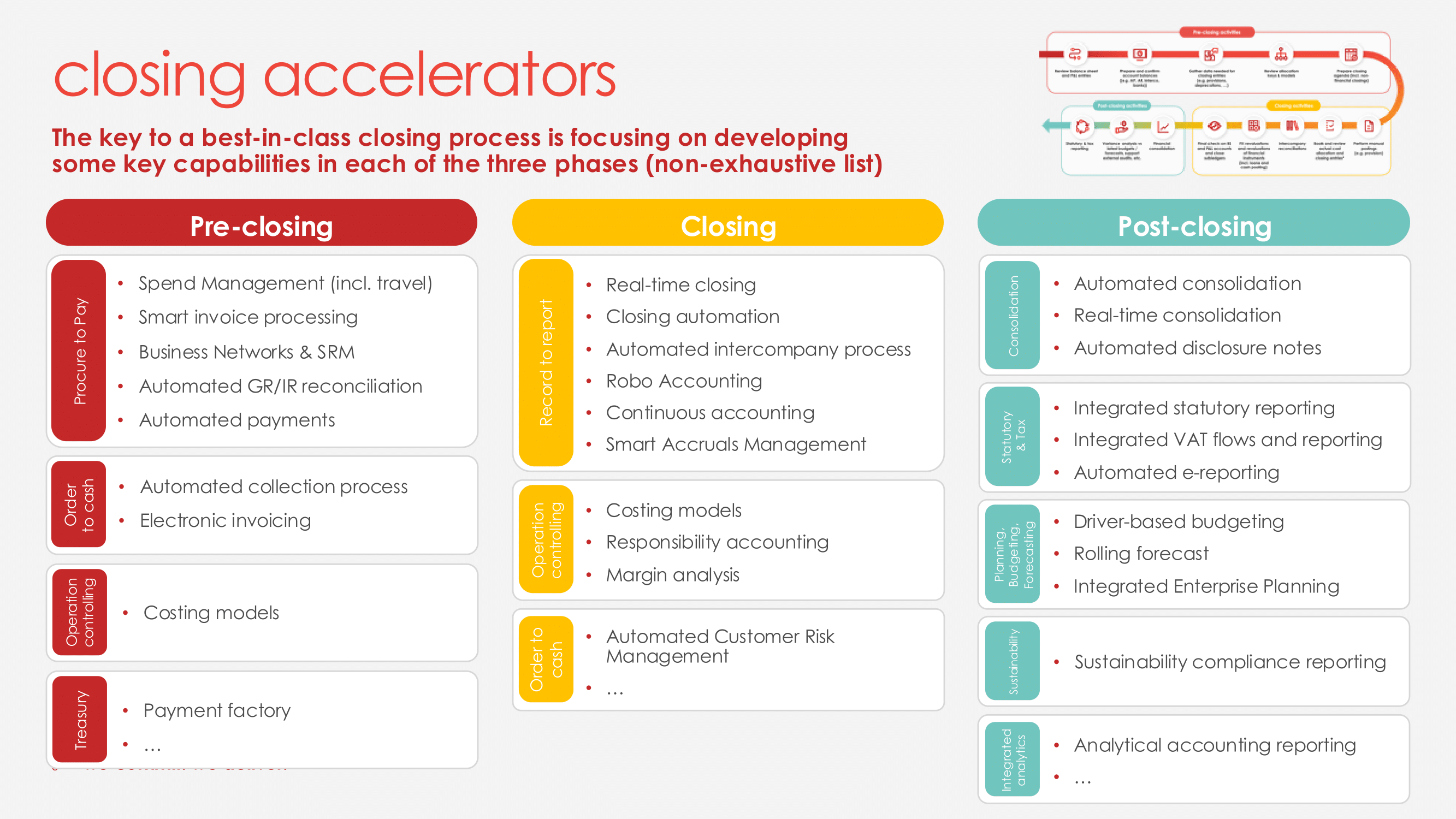3. Commit to continuous improvement
Another guideline to navigate today’s volatile world and create financial value is that CFO offices should not only invest in technology but also cultivate a culture of continuous improvement and invest in upskilling their teams. It will not only be important to stay on top of the financial aspects of the closing but also to control and report on non-financial data.
This means that data analytics is becoming crucial to the financial closing process. It enables finance professionals to analyze vast amounts of data generated by financial activities and processes, or identify trends, anomalies, and discrepancies, and ultimately make better decisions.
Joseph: “Once you start improving the closing process, the benefits will compound exponentially, as the financial close is a recurring monthly task. Each month, the process will become faster and smoother as teams adapt, refine their workflows, and discover new ways to boost efficiency.”
Looking ahead, there is a growing demand from investors, regulators, and stakeholders for greater transparency and accountability on Environmental, Social, and Governance (ESG) issues. CFOs are also expected to manage ESG-related risks and report on their organization’s non-financial data, reflecting the increasing importance of sustainability and ethical governance.





/Website_Landingpage_ControllingReporting_1920x355-(1).webp?mode=autocrop&w=320&h=240&attachmenthistoryguid=2776e766-8980-47ec-8a49-e26dccaf17b1&v=&c=bd6ed27971360fd12bc99be5f5294ec152c043b48a85cd5396706b71fe7896b9)
/sustainability-banner-3200x500-(2).webp?mode=autocrop&w=320&h=240&attachmenthistoryguid=56455147-9a83-4bb2-9d3f-3bfdc159726a&v=&c=83fff48bfead5571ea55ed54661431a0e38dad0d9d9c1d73d3ee925b0c3fbbec)